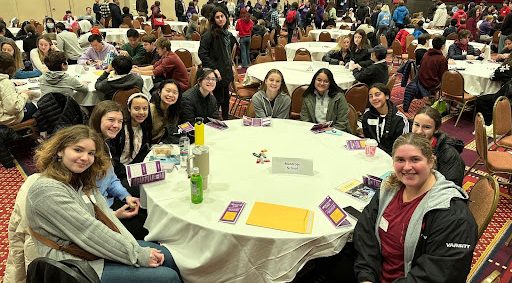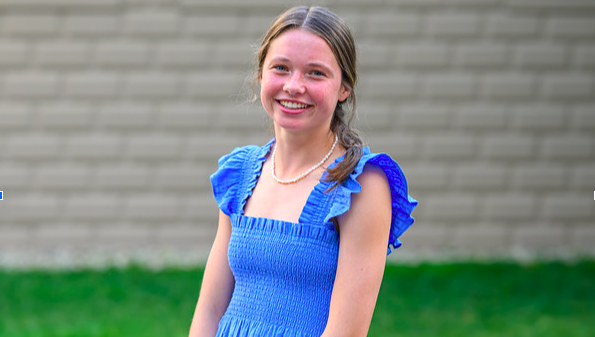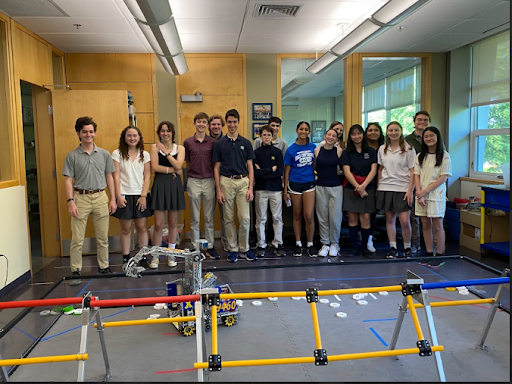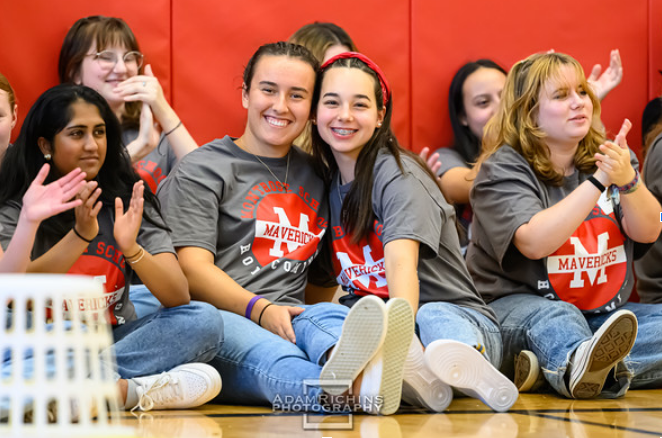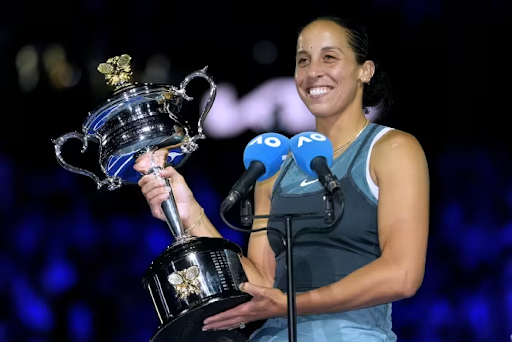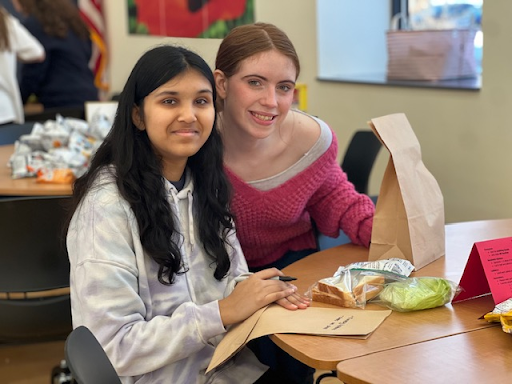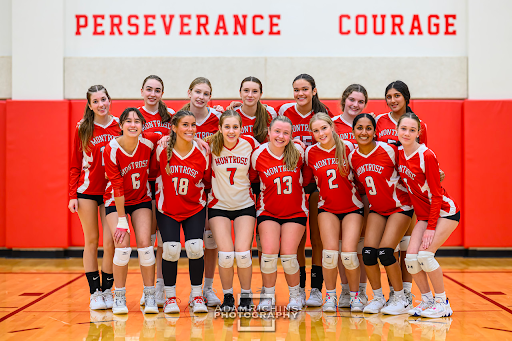On Thursday, November 30th, ten Montrose Junior Classical League members, along with Latin teachers Mrs. Demirjian and Ms. Troitski, attended 2023 Classics Day at Boston University’s George Sherman Union. The day ranged from lectures to hands-on work and so much more. Let’s take a look at what went down!
The morning began with a VERY long drive for all of us. While some students drove themselves from home, others carpooled. Coming from Westwood, it took me over an hour to get there due to rush hour, and my journey not only included my first time parking in a parking garage but also nearly losing my passenger side mirror while entering said parking garage. Thankfully, I’m happy to say that my mirror is still intact, however.
After we all arrived, we met on the ground floor of the George Sherman Union before making our way upstairs. Students came in by the busload from a variety of schools across Massachusetts, as far as Barnstable and Mount Greylock to as close as Boston Latin School and everywhere in between. Each school had its own table in the large ballroom, where we began our day. First, we heard from the Mass-JCL officers, a panel of passionate high school Latin students from a variety of high schools in the Boston area. During this time, we got to hear about the coin wars tradition in which each of the Mass-JCL officers picks a charity that’s close to their heart and fundraises for it. The charity with the most funds at the end of the JCL season gets all of the proceeds, including those that the other charities raised.
Afterward, we all made our way to our first lecture. The lecture that I attended during this time was with Boston University Classics professor James Uden, who was talking about how the Ancient Romans went on vacation, and I attended alongside Ms. Troitski. He talked about the difficulties that surrounded vacationing during Roman times, such as bandits, diseases like malaria, sometimes poor weather conditions, and the long distances that had to be stretched by both horse and carriage and ships. However, travel within the Roman Empire wasn’t difficult as only two languages, Latin and Greek, were spoken throughout the entire area, and the same currency was used. At the Roman Empire’s peak in early-second century AD, the empire’s land stretched across parts of the modern-day nations of Spain, France, Britain, Belgium, Germany, Italy, Switzerland, the Balkan Nations (including Greece, Albania, Croatia, Serbia, North Macedonia, etc,), Turkey, and parts of North Africa and the Middle East. While many Romans traveled to visit religious sites such as the Oracle of Delphi, they also traveled for sporting events such as the Olympics, and they traveled for fun like the way we do today. Overall, I really enjoyed Professor Uden’s lecture, and it was definitely my favorite part of the day.
After a short break, we made our way to our next lecture which, for me, was a lecture by Harvard professor Rachel Love, regarding reading and writing in Ancient Rome, and I attended alongside Ms. Troitski, Mrs. Demirjian, and Abby Biggins ‘27. During the lecture, Rachel talked about how Romans would spread stories through performance and oration as only around ten percent of Ancient Romans were literate. Writers would also attend plays and court hearings in order to record their version of it which is very impressive; we even participated in an interactive activity where we tried to record EVERY word that Professor Love said. Some materials that the Romans used to record information included papyrus, a type of reed that was pressed flat into a thin sheet, a papyrus reed (called a stylus), and ink. Hearing this made me much more appreciative of the modern-day pen and paper as papyrus was pretty fragile, and writers would have to constantly sharpen their stylus and dip it in ink. Along with papyrus sheets, Romans would use ostraca to take down information – ostraca are broken pieces of pottery, which the Romans would carve when they were in need of a place to write something down but didn’t have any papyrus on hand. At the end of the lecture, we got to write using a stylus and ink on index cards and also took a stab at writing on ostraca.
After our second lecture, it was time for lunch. Lunch was pretty ordinary with sandwiches being the main course and chocolate chip cookies that were actually quite delicious. The final part of the day consisted of Ancient Rome and Ancient Greece-themed skits which were put on by the schools in attendance. Many schools went all-out, with well-thought-out skits that even included costumes and props. Overall, I had a great time at Classics Day, as I got to bond with fellow Latin students and also got to take a deeper dive into different aspects of Roman life and culture.
By Kristina Klauzinski ‘24, Sports Editor
24kklauzinski@montroseschool.org

